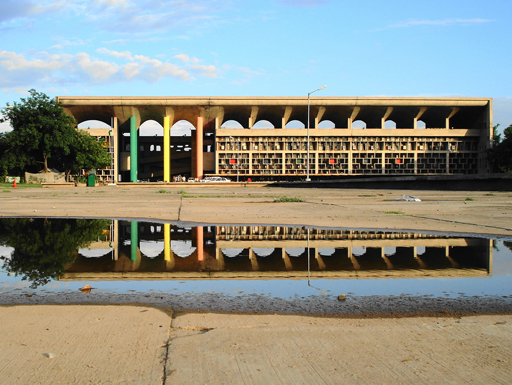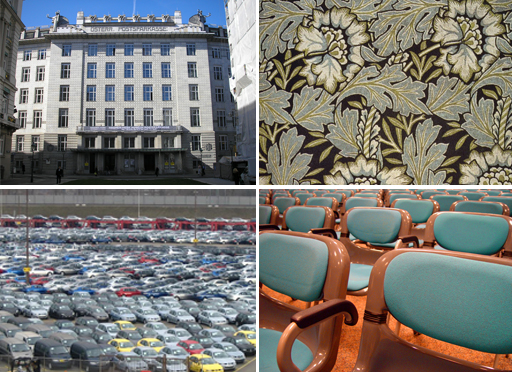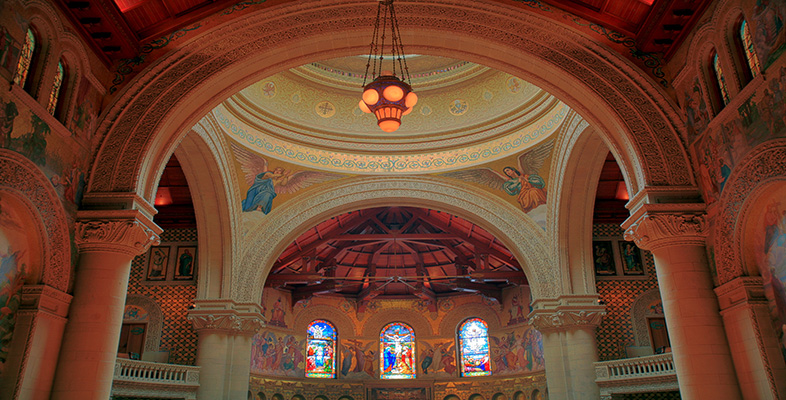3.1.2 Repetition
In section 3.1.1 we noted that structures are assemblies of parts. Figure 6f illustrated a composition that has an overall structure plus we can see the different parts that make up the structure (the individual pieces of paper and the lines on each sheet). However, what if each part was identical, that is, each contained the same line, in the same place and the paper was used the same way round? If they were all the same they would be displaying repetition in their composition. Look at the example of architecture in Figure 8. It is a building in the Indian city of Chandigarh, and was designed by Le Corbusier following India’s independence in 1947.

Look at how the repetition of parts in this building becomes a dominant feature of the structure and the overall composition. Not only can we see repetition in the roof arches, there is repetition in the wall structures. Looking for repetition is a good way to heighten your visual awareness.
Activity 11 Visual repetition
Take some photos that show visual repetition in design composition. You can choose any subject for your photographs, e.g. products, buildings, components, etc. If you are stuck for ideas look around shops or DIY centres that have many of the same items on display.
Discussion
Figure 9 shows some examples we found.

Repetition can be a significant feature in other fields of design. Look at the dress shown in Figure 10.

This dress uses repetition to create strong diagonal lines. These are so dominant they work like tones in music. You could imagine if you touched upon the dress, each line would make a different sound. They bring a rhythm to the design.
